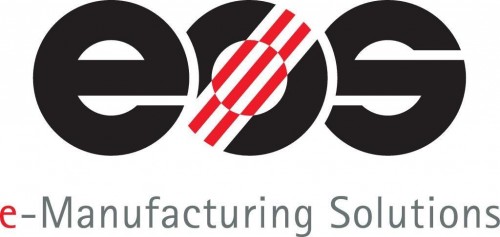Choosing Technology
Choosing Proper Technology
All rapid prototyping technologies have got a single common feature. Parts built in this way are made of layers of specific materials. Those layers can be either selectively transferred onto a building platform or they can be selectively solidified. Layers can be created from: pulverised, liquid or sheet cut material. There are many ways of binding materials in additive technologies. It can be energy in form of heat, laser light, electron beam but also chemical catalysts or liquid binders. Materials for additive manufacturing are mostly dependent of technology used and these can be: ceramic powders, composites, acrylic and epoxy resins, thermoplastic resins, paper, plastic foils, metal alloys and wooden composites.
Data Preparation
The default universal form of digital data for rapid prototyping technologies is STL file which describes volume objects in a form of triangulated surfaces. We also accept popular 3D CAD formats like STP, IGS, _xt. Which we can convert to STL files.
During STL preparation in your CAD or 3D design program we recommend to set dimensional precision to 0,01mm and angular precision to 5-8 deg.
Advantages and disadvantages of available additive manufacturing
and rapid prototyping technologies
| SLA – Stereolitography apparatus | |
| Advantages | Disadvantages |
| – good surface quality on unsupported walls (layer thickness 0,05 – 0,15mm) | – relatively long building time |
| – large spectrum of different materials which mimic mechanical properties of variety thermoplastic resins. | – difficulties in support removal from semi closed spaces of a part (walls after support removal should be sanded) |
| – very good dimensional precision (+/- 0,02% max. dev. +/-0,2mm) | – relatively higher cost of parts |
| – possibility to build large parts with high precision up to 2050x680x780mm in one piece | – relatively low thermal resistance and shock absorption for cheaper SLA resins unless used high-tech resins. |
| SLS – Selective Laser Sintering | |
| Advantages | Disadvantages |
| – better surface quality in comparison to FDM technology (raw parts) | – high porosity of thin walled elements 0,8-2,5mm (depending on built layer thickness) |
| – high impact resistance similar to injection moulded parts | – relatively long building time |
| – no supporting structures enable creation of the most complex geometries even with semi closed cavities (min. wall thickness 0,5mm) | – high surface roughness in raw parts |
| – possibility to build large parts up to 650x500x300mm in one piece | – high risk of part deformation on large flat surfaces without any reinforcing ribs |
| – low price for low volume production (100-5000 pcs. depending on part size) | – low dimensional precision for large parts (± 0.3% with lower limit on ± 0.3 mm) |
| – Possibility to use glass filled and aluminium filled polyamide 12 material up to 30% – better part stiffness | – lack of transparent materials |
| FDM – Fused Deposition Modeling | |
| Advantages | Disadvantages |
| – wide choice of thermoplastic materials (ABS, PC, PC-ABS, PPSF, PEI, PA12) | – low surface quality (layer thickness 0,12 – 0,33mm) |
| – material properties are close to popular thermoplastic resins and technical thermoplasts | – relatively high part porosity in raw state (needs post processing) |
| – high dimensional quality of large parts (±0.1% with lower limit on 0.2mm) | – breakaway support structures may be difficult to remove. Dissolved supports take long time to dissolve. |
| – possibility to build large parts in single piece up to 600 x 500 x 600 mm | – relatively higher cost of large parts due to long building time |
| PolyJet – Polymer Jeting | |
| Advantages | Disadvantages |
| – High surface quality due to ultra-thin layers 0,016-0,032mm | – gel like support material may be difficult to remove in semi closed cavities |
| – variety of materials simulating mechanical properties of different rigid and stiff thermoplastic resins. | – poor thermal stability 45-90degC |
| – very good part dimensional precision (+/- 0,02% max. dev +/-0,2mm) | – Low impact resistance |
| – unique technology which allows building multimaterial parts within single process (overmold prototype – rubber and rigid elements) | – relatively high part cost due to the costs of resins |
| – possibility to build multicolour parts | – materials are hygroscopic which may influence long term dimensional stability for walls thinner than 0.1 mm. |
| – relatively high building speed regardless of thin layers | |
 FADO has become one of EOS official service providers for DMLS technology (direct metal laser sintering). You will find FADO’s profile at:
FADO has become one of EOS official service providers for DMLS technology (direct metal laser sintering). You will find FADO’s profile at: